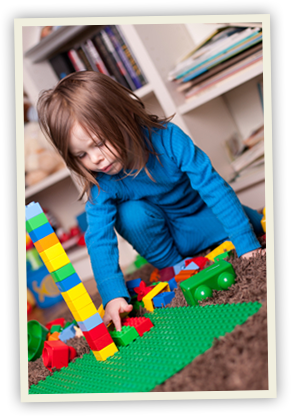Leggo my lego!
Tools for resolving conflict between your children.
Originally Published in Multiple Moments: A Publication of Multiple Births Canada
Quarterly Issue 4
It’s Sunday morning with your toddlers and the same routine begins, pancakes are cooking, lego buildings begin to rise and soon you hear it, wailing and crying complaints from the other room. You ask what is going on and instantly you are bombarded with two versions of violations. With twin toddlers its not uncommon that one had an idea that the other wanted to get in on but it all went to pot. They don’t have the communication skills to negotiate and navigate without some assistance when emotions are running high. When you stop to think about it, often adults don’t either.
 If you have one toddler yelling no to the attempts of the other to build on their structure, one idea is to empathize with both about their position. “You are upset because Sammy tried to build on your house and you didn’t want him to.” “You are upset because you really wanted to participate by building on Suzy’s house.” The more you can validate the position of the child and what their experience is in the conflict the greater success in having them understand and appreciate the other child’s position. Following this, you then have the opportunity to correct any behaviour. “When you want to build on Suzzie’s house try asking her where you can build and what kind of building she needs.” Instead of instantly trying to correct the pushing by Sammy to put his buildings on Suzy’s, take the time to encourage your kids to consider how to resolve the conflict without your arbitration. “Remember when you wanted to be included in Sammy’s fort yesterday and he didn’t want you to come in and this made you feel sad? Now is a good time to tell Sammy that he can build a house next to yours or that together you can build lots of houses, or that in 5 minutes he can play with you or that you will tell him when you are finished with those lego pieces...”
If you have one toddler yelling no to the attempts of the other to build on their structure, one idea is to empathize with both about their position. “You are upset because Sammy tried to build on your house and you didn’t want him to.” “You are upset because you really wanted to participate by building on Suzy’s house.” The more you can validate the position of the child and what their experience is in the conflict the greater success in having them understand and appreciate the other child’s position. Following this, you then have the opportunity to correct any behaviour. “When you want to build on Suzzie’s house try asking her where you can build and what kind of building she needs.” Instead of instantly trying to correct the pushing by Sammy to put his buildings on Suzy’s, take the time to encourage your kids to consider how to resolve the conflict without your arbitration. “Remember when you wanted to be included in Sammy’s fort yesterday and he didn’t want you to come in and this made you feel sad? Now is a good time to tell Sammy that he can build a house next to yours or that together you can build lots of houses, or that in 5 minutes he can play with you or that you will tell him when you are finished with those lego pieces...”
When one child is hitting another it’s easy to jump in and to think the corrected behavior needs to be with the one who seems to be the aggressor. It’s so important during this time to recognize the context of what happened before assigning blame. It’s also really important to recognize if your discipline strategies include either shaming or gender stereotypes as these have long lasting implications.
For example: During the week Suzy and Sammy transitioned to daycare, Suzy lost sight of Sammy and became distressed. Staff brought Suzy to her twin brother which comforted her and they continued on with their play. In the following week Sammy lost sight of Suzy and became distressed. When he was brought to Suzy he wanted to hold her hand for comfort. Unfortunately at that moment, Suzy said no which further upset Sammy. While Staff were trying to navigate respecting both children’s wishes Sammy began to seemingly hit Suzy which resulted in pulling them apart and Sammy getting in trouble for hitting. What really was happening however, was that Sammy felt afraid, sought comfort, tried to get his needs met and then was shamed for his feelings and behavior. Sammy did not have the verbal skills to communicate his needs and there is a social perception that boys hitting girls means only aggression. It is a fine dance as well, not to bully or override Suzy’s wishes either as this can also lead to girls believing that their feelings and needs belong on the back-burner.
Discipline solutions that consider the context and the intention behind behaviors will help parents and caregivers guide their children to more appropriate outcomes. Options for the above scenario could include asking Suzy if she would be willing to hold Sammy’s hand for 5 minutes, asking Sammy if he would be willing to sit beside Suzy while she plays so that he can see her, to using earlier similar conflicts between the twins to build on compassion and understanding such as “remember last week when you lost site of Sammy and you just needed a bit of reassurance”. When we move away from the the feeling of needing to instantly correct bad behavior towards wanting to understand the context in which the behaviour occurs we offer our children a better opportunity to understand themselves and how they relate to others.
Stopping ourselves from simply playing the police role in disputes, and instead recognizing the opportunity to help our children learn social skills and conflict resolution skills will have much more benefits than a 5 minute time out. We know that not every lego playing activity results in conflict between the kids. Thinking beyond the immediate triggers to the larger context and what developmental skills they may be trying to master can guide us in how to respond to their conflict. And when all that fails, buy double lego.
Tania Zulkoskey
LGBTQ Support Network Chair





